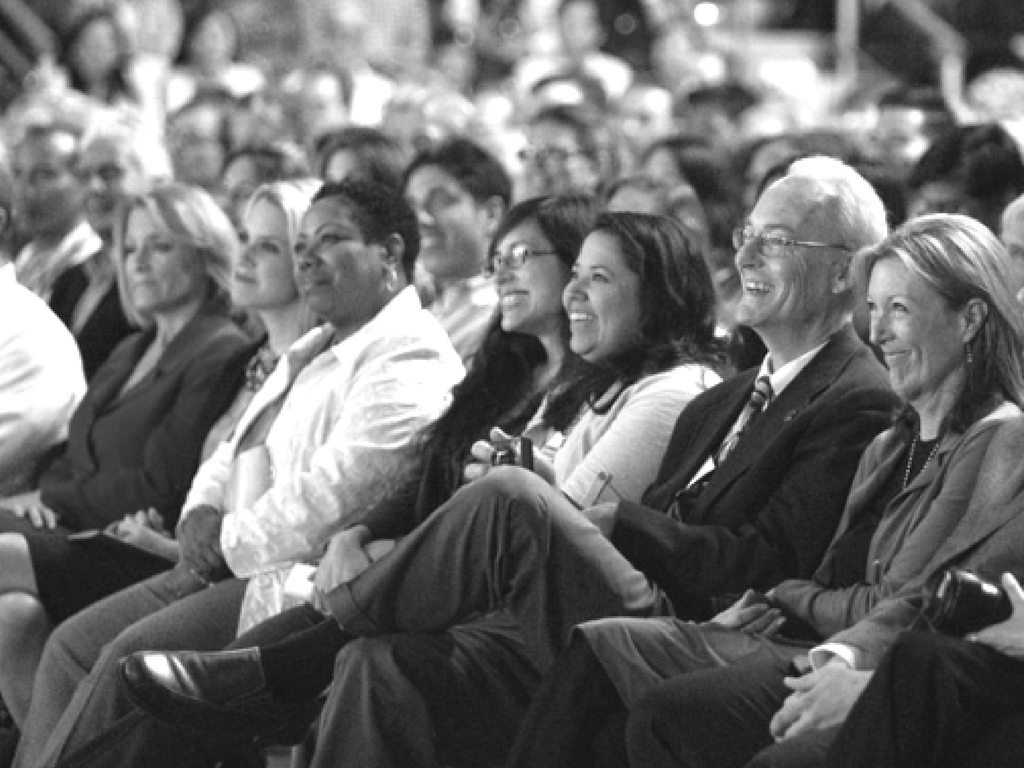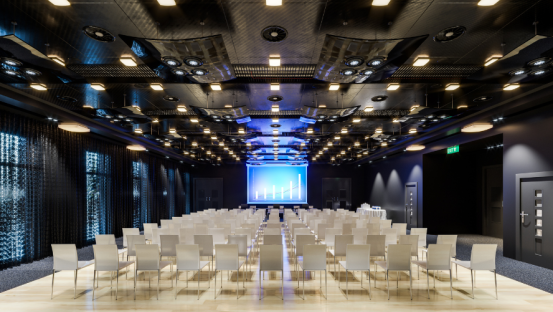How to read your audience in 10 seconds

Members of an audience don't usually think of themselves as being observed, and consequently, their body language is relatively easy to read.
The ability to read an audience while you are speaking, and to adjust your content or style of delivery on the fly, is generally considered to be a top-level skill for a speaker.
-
What are the audience’s demographics? Will this affect their body language?
Do gender roles from certain cultures translate to reduced eye contact? Are audience members fidgeting and moving around a lot because they’re teenagers?
While you’ll want to avoid stereotyping and only focusing on demographics, by finding out a lot about who is going to be in your audience will help you decide whether or not your topic is going to flop or fly..
-
The demographics
-
Age Range
-
Socioeconomics
-
Dominant cultural background
-
Their general political standing/current feeling about the political atmosphere
-
Specific group values
-
- Find out more about demographics and reading your audience “Find an audience who gives a damn”
-
What is the venue like, and how are the stage and lights set up?
For smaller rooms, with natural lighting, where you can make eye contact, and are on the same level as the audience, you may want to be a little more relaxed and down-to-earth.
For a big stage with spotlights, play up the professionalism and showmanship.
You might want to request that lighting be altered in a way that will complement your message and tone better.
-
What time of day is it: is it in the morning and everyone is ready to get started? Post-lunch when everyone has low energy? Have they had a few drinks and are easily excited?
You might have to adjust your tone and energy accordingly.
-
What are they wearing?
If the majority of the audience is in jeans and sandals, perhaps you can free-up your tone and use more slang and colloquialisms.
If they are in suits or heels, keep it more professional.
- Look out at the audience before you get on stage: are people sitting close together and chatting, or are they facing forward, on their devices, somewhat solo? Do they look like they want to be there, or do you get the feeling they are there because they have to be? Is the audience happily conversing with each other?
Work with the mood that is in the room instead of against it.
If people are chatting, use more interaction. Get them to participate and interact with each other. If they are more solemn, stay on topic and add a lot of value early on.
-
Notice what makes them smile or nod.
If you’ve struck a chord with them, make a note of what prompted the positive response. Come back to it, or replicate it, when the energy feels like it is dipping.
Similarly, did something you say get an applause or verbal sounds of agreement? That is a clear indication that your audience wants to hear more.
This list could go on indefinitely depending on your powers of observation.
The point is this: if you can adapt your talk based on your audience, you will increase your ability to get your message across, build your audience base, and increase the likelihood you will get hired to speak again. =
Reading you audience’s body language
Look at their facial expressions and how they are holding themselves.
Are they tapping their toes?
Touching their mouth?
Are they smiling or grimacing?
Are they nodding? If so, is it fast or slow?
These cues can be decoded and help you figure out whether your message is hitting the mark or not.
Being able to assess your audience is an essential skill to be a successful speaker.
It is important to never judge one solitary piece of body language on one audience member. Instead, look for “couplings” of body behaviors on multiple audience members.
For example, if five or six people are all scowling at you with their arms crossed, and most of them are not making eye contact, chances are they disagree or feel hostile towards your message.
On the other hand, if a lot of people are leaning forward and stroking their chins, you probably have them thinking heavily about your topic. If only one person is smiling and the rest are on their smartphones, it might be time to switch tracks.
See the images below for some common body language and what it means.

How to tell if your audience is agreeable and entertained:

Smiles are indicators of acceptance and agreement. Bright, wide smiles coupled with eye contact and nodding are telltale signs that your audience agrees with what you are saying and are having a good time.
If your audience is laughing, giggling, or even suppressing a laugh (by covering their mouth), that means your jokes and stories are hitting the mark. Find out more about using humor in your presentations, here.

Slow head nods indicate agreement, understanding, and acceptance of what you are saying.
Even better is when they are coupled with a slight eyebrow raise, this generally means that the information is also new or interesting.

Excited happiness is usually expressed by a smile with the head tilted upwards and a big inhalation of breath. Sometimes, this is coupled with shifting their weight forward, small bouncy movements in the seat, or a rocking motion.
How to tell if your audience is open and interested:

Audience members who are interested in what you are saying will smile and lean slightly forward. They may tilt their head slightly to one side, or slightly furrow their brow, occasionally blinking in concentration.
Their posture will be fairly upright and attentive, while still seeming relaxed and smiling.

Your audience is thinking about what you’ve said:

Hands are the number one clue here. You can usually tell if your audience member’s brains are busy by what their hands are doing.
Hands that are clasped together indicate that they are considering what you are saying.
Stroking their chin means they are processing and judging what is being said.
Another great indication the audience is thinking about what you are saying is they put their hands close to their mouth in a relaxed fashion.

Hands in the “steepled” position indicate they have made a decision about what you’ve said, or have made a decision about what they want to do next.
Your audience is feeling neutral to you and your message:

Neutrality is not necessarily a bad thing. It is probably where most of your talks will start. The audience has not yet decided whether or not your message is relevant, believable, or if you are a credible source.
You can tell when an audience is feeling neutral when they have a somewhat blank face: neither smiling nor frowning, and their body is in an upright (or slightly forward-leaning) position.
How to tell if your audience is confused:

Be on the lookout for confused faces: it might mean you need to go back on your point and explain it more slowly or in a different way.
Confused body language and facial expressions are somewhat easy to spot. Look for asymmetrical body language: a furrowed brow, head or body tilted to one side, mouth pulled down to one side, one raised eyebrow. They might also do a quick scan around the room to see if other people are also confused.
Sometimes, if an audience member is thinking of a question, but doesn’t want to ask, they cover their mouth with their hand.
Is your audience getting impatient with you?:

Sometimes, your story, tangent, or point might be running a bit too long, and your audience will want to move on or make the point.
Look for quick head nods. Slow head nods are good and signify understanding, whereas quick head nods are the nonverbal equivalent of saying, “Yes we get it, move along.”
Audiences can move from impatience to irritation within a matter of moments, which can segway into disinterest and boredom quickly. If they are ready for the next point or piece of information, they will start getting very active with their feet and legs by circling or swaying their dangling foot, alternating their legs, or tapping one of their feet.
If you see this coupled with them pulling out their smartphone, picking up the event pamphlet, or glancing down at their watch, you need to pick up the pace or move to the next point quickly.
Your audience is bored:

Boredom will immediately block your ability to get your message across. How can you tell your audience is bored? They will start to shut down, tune out, and turn off.
First, their posture will change. They may turn away from you slightly or slump in their chair.
Their head may drop sideways or downwards and might have to be supported by their hand to keep it upright. Crossed arms is another indication.

They will start fidgeting either with their devices, glasses, watches, pens, or jewelry. Basically, anything they can get their hands on. They may even make audible sighs.
Members of the audience who become bored are also easily distracted: they may start to whisper among themselves, doodle on notepads, or search for something in their bag.
Watch out for a loss of eye contact, a glazed-over or deadpan look coupled with brows and lips that slightly pursed.
If their eyes are not on you, they are probably thinking about something else. Their eyes will stare into a blank space as they are lost in their own thoughts. A bored audience member may even close their eyes for brief, or even long, periods.
That vacant look on their face means they have mentally checked out. You’ve got to do something like change your vocal tone, start moving around more, or integrate some interaction to bring them back into the room and refocused on what is being said.
You might be making your audience uncomfortable:

When people are uncomfortable, they will try and “get away” from whatever is bothering them.
Since they can’t get up and leave the presentation, they will try and move their body away instead. This means they will angle their head or body as far from you as they can.
A body language “tell” is when audience members touch their neck: massaging their neck and shoulder or touching something by their neck (like their scarf or necklace). It is a pacifying gesture, an attempt to self-soothe.
Look out for people who are touching or partially covering their face. This comes from a subconscious desire to hide the face or cover the ears blocking out what we don’t like.
It could be your topic, story, or body language that is making them feel uncomfortable, and the audience will pick up on your energy (especially when you are nervous). If you feel you are making them uncomfortable, stay calm and wrap up your point to move on to the next topic.
How to tell if your audience disagrees, is disapproving, or hostile:

If the audience is scowling and frowning at you, there is a good chance they are feeling negative about what you are saying.
A handful of unhappy faces should be easy to catch, but also be aware of more subtle negative body language, such as arms folded defiantly, legs crossed, and a loss of eye contact. They are mentally building a barrier between them and you.
It’s pretty obvious when someone is disapproving of what you're saying, but let’s go over the telltale signs: pointedly discussing something with the person next to them (not smiling or nodding), or avoiding looking at you by looking at the ceiling, floor, or out of a window. If they are looking at you and actively frowning (not resting “grumpy” face), this is also an indication.

Also, be on the lookout for suspicious or judgemental facial expressions, this might mean you need to go back and source your information or explain in more detail where the specific insight came from. Look for signs that the audience feels uncomfortable, such as furrowed brows, squinting or downcast eyes, unsmiling tilting of the head, and tightening the lips.
If the audience has judged what you are saying negatively, they may grimace or clench their teeth, shake their head “no”, frown, or offer a tight, unpleasant smile.
When you have said something that the audience is upset by, their body language will get defensive.
This is straightforward. They will attempt to “protect themselves” by crossing their arms, crossing their legs or ankles, tighten their mouth into a straight or slightly downturned line, or clench their jaw.
Alternatively, they will try and “escape” the room by looking away from you, turning their body away, pointing their feet towards the exit, or exhaling loudly (or “huffing”). These signs are indications that they’re trying to make a break from the room.
If this happens with more than a few people in the room, switch track immediately or level with them and see what the problem is.
In terms of audience engagement, the worse thing to do is to pretend that nothing is wrong and just keep going. While you might be worried about your time frames or getting all your points in, an audience that is thinking negatively about you and your presentation is not listening anyway. It is better to get them back on track with you, then to “power through” your content.
What can you do if you feel like you are losing your audience?
By working with your audience, you’ll become a more dynamic speaker. One of the best ways to do so is to be honest about how you are doing and interact with them on their level.
If they look collectively confused, ask them what part is not clear.
If they look bored and unengaged, be honest about how you are doing and lightening things up with a story or joke.
If they look angry, suspicious, or defensive, go back through your information and state your sources and facts. Then, switch tracks or open the floor for a Q&A to get to the bottom of why it is upsetting them.
Show your audience that you are aware of what is going on and that you want to make active changes to make it better, and easier, for them to understand.
They don’t need you to be perfect, but they are looking for someone who can understand their perspective.






